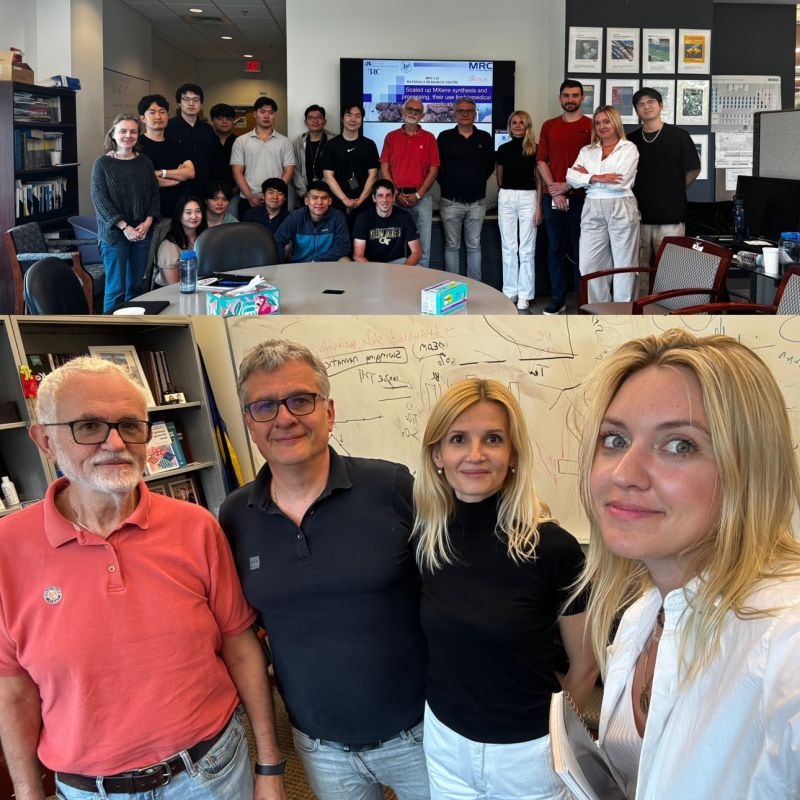Symposium on Two-dimensional Nanomaterials 2015
10-11 March 2015, Melbourne, Australia

Two-dimensional (2D) nanomaterials, are emerging new class of nanomaterials with many fascinating properties and applications. This two-day event provides an ideal networking opportunity for researchers to communicate on their latest research.
The areas of focus for this meeting will include (but are not limited to) both advances in fundamental physics, chemistry, materials science, biology and computer modelling of 2D materials, including graphene, BN, MoS2 and transition metal dichalcogenides (TMDs) nanosheets, but also their applications in functional materials. Applications in areas of energy, the environment, nanomedicine and sensing are welcomed.
Professor Yury Gogotsi, Drexel University (USA) will give a Keynote Lecture at the Symposium on Two-dimensional Nanomaterials in Melbourne - "Two-Dimensional Carbides and Nitrides (MXenes): Synthesis, Properties and Electrochemical Applications" on Tuesday, March 10, 2015. Also he will give an invited talk at a post-conference Workshop at the Institute for Frontier Materials, Deakin University, Geelong, on "Capacitive Energy Storage Systems Utilizing Carbon Nanomaterials”.
Two-Dimensional Carbides and Nitrides (MXenes): Synthesis, Properties and Electrochemical Applications
Yury Gogotsi*
Department of Materials Science and Engineering, and A. J. Drexel Nanomaterials Institute,
Drexel University,
Philadelphia, PA 19104, USA
Этот e-mail адрес защищен от спам-ботов, для его просмотра у Вас должен быть включен Javascript
Two-dimensional (2D) solids – the thinnest materials available to us – offer unique properties and a potential path to device miniaturization. The most famous example is graphene, which is an atomically thin layer of carbon atoms bonded together in-plane with sp2 bonds. Recently, an entirely new family of 2D solids – transition metal carbides (Ti2C, Ti3C2, Nb4C3, etc.) and carbonitrides – was discovered by Drexel University scientists.1,2 Selective etching of the A-group element from a MAX phase results in formation of 2D Mn+1Xn solids, labeled “MXene”. Eleven different carbides and carbonitrides have been reported to date.2-5 Structure and properties of numerous MXenes have been predicted by the density functional theory, showing that MXenes can be metallic or semiconducting (up to 2 eV band gap), depending on their surface termination. Their elastic constants along the basal plane are expected to be higher than that of the binary carbides. Oxygen or OH terminated MXenes, are hydrophilic, but electrically conductive. Hydrazine, urea and other polar organic molecules can intercalate MXenes leading to an increase of the c lattice parameter of MXenes.3 When dimethyl sulfoxide was intercalated into Ti3C2, followed by sonication in water, a stable colloidal solution of single- and few-layer flakes was produced. One of the many potential applications for 2D Ti3C2 is in electrical energy storage devices, such as batteries, Li-ion capacitors and supercapacitors.4,6 Cations ranging from Na+ to Mg2+ and Al3+ intercalate MXenes. Ti3C2 paper electrodes, produced by vacuum assisted filtration of an aqueous dispersion of delaminated Ti3C2, show a higher capacity than graphite anodes and also can be charged/discharged at significantly higher rates. They also demonstrate very high intercalation capacitance (up to 900 F/cm3) in aqueous electrolytes.
References
1 M. Naguib, et al, Advanced Materials, 23 (37), 4207-4331 (2011)
2 M. Naguib, et al, ACS Nano 6 (2), 1322–1331 (2012)
3 O. Mashtalir, et al, Nature Communication, 4, 1716 (2013)
4 M. R. Lukatskaya, et al, Science, 341, 1502-1505 (2103)
5 M. Naguib, et al, Advanced Materials, 26, 992-1005 (2014)
6 M. Ghidiu, et al, Nature, 516, 78–81 (2014)
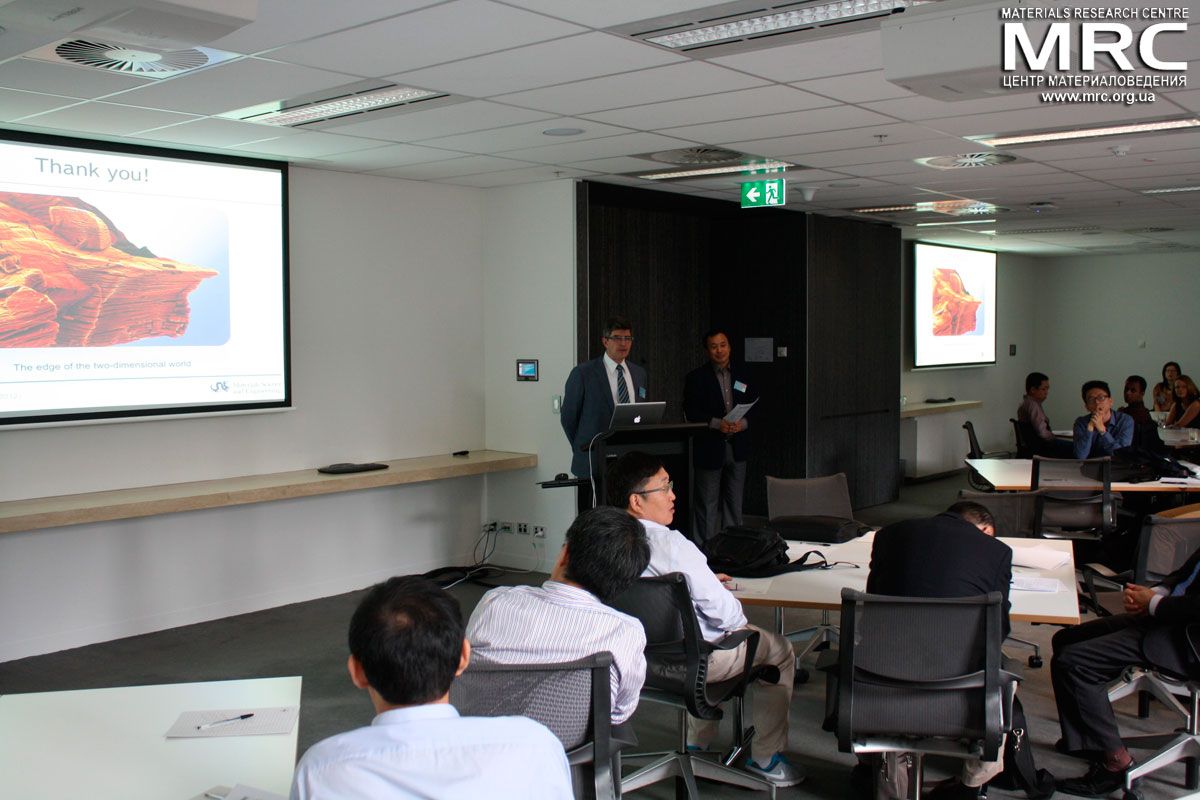
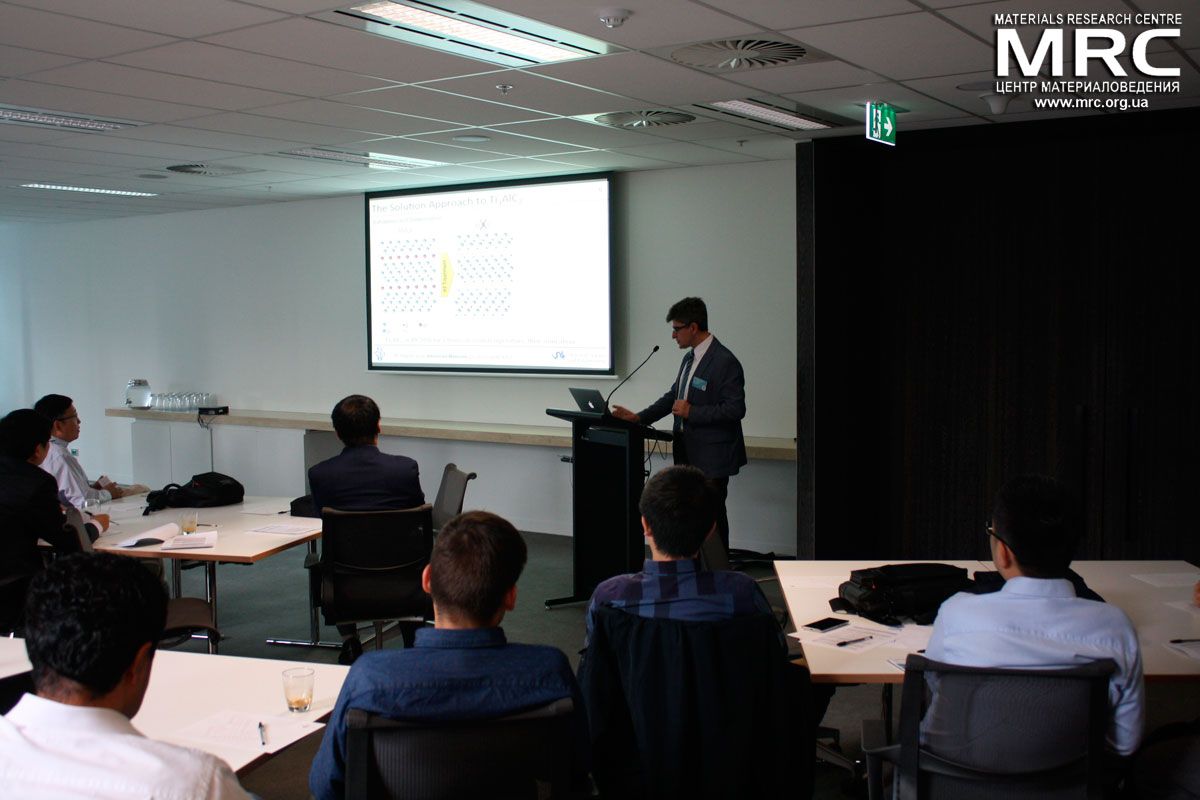
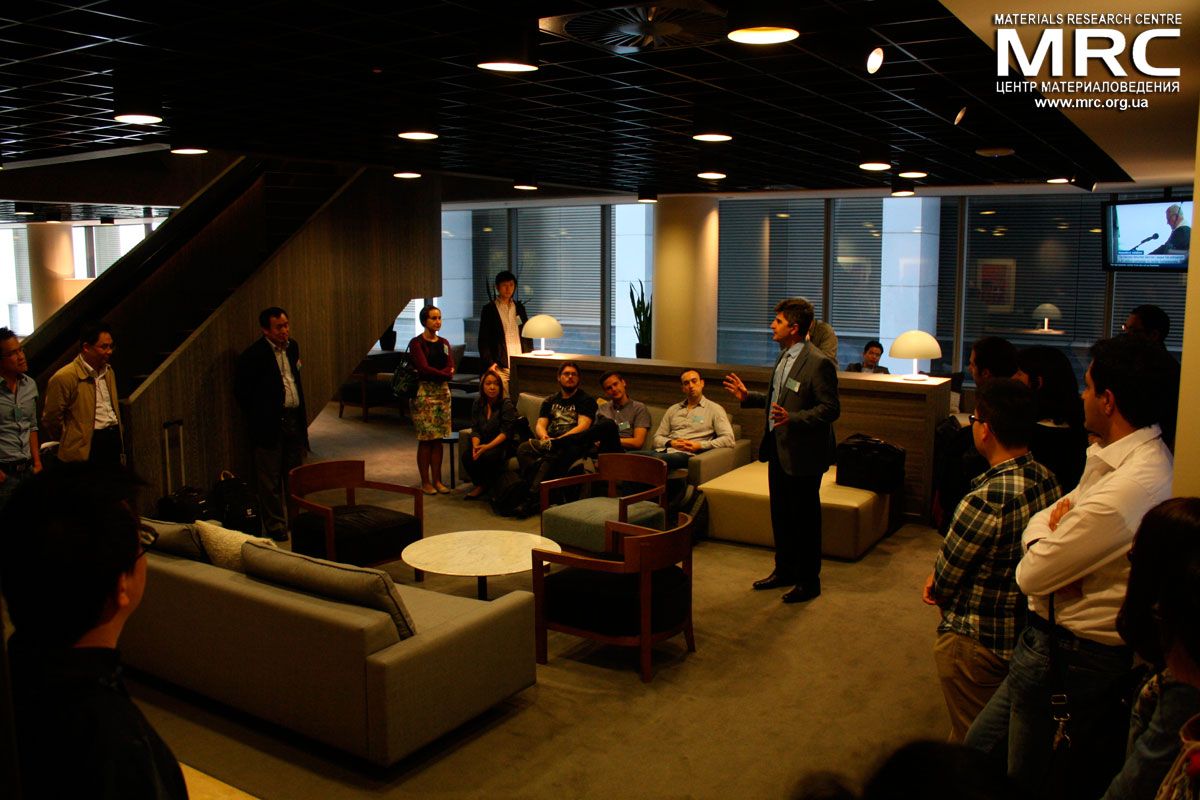
Source: www.deakin.edu.au



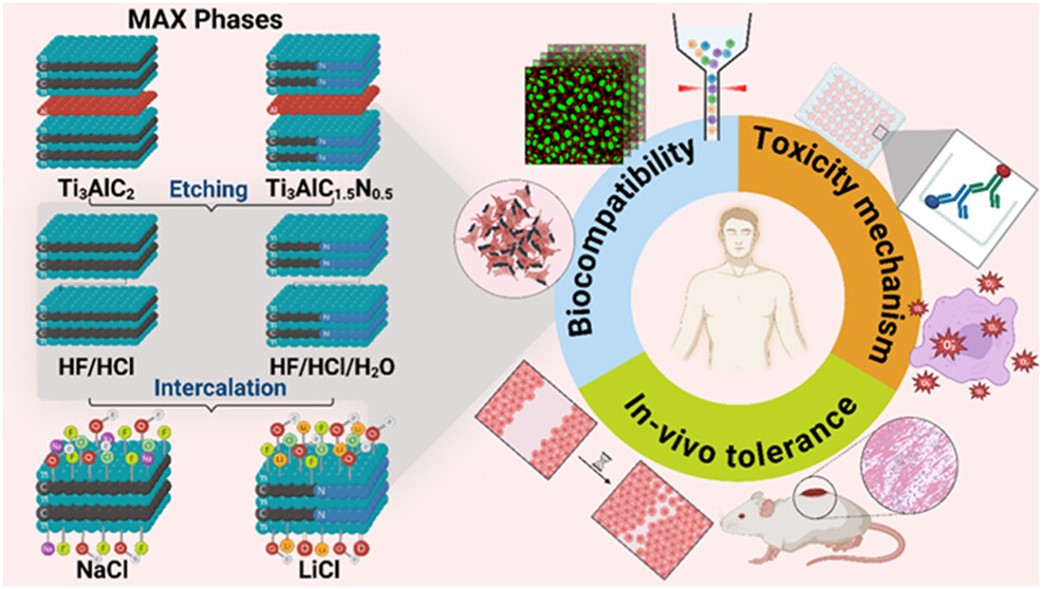 MXenes potential applications include sensors, wound healing materials, and drug delivery systems. A recent study explored how different synthesis methods affect the safety and performance of MXenes. By comparing etching conditions and intercalation strategies, researchers discovered that fine-tuning the surface chemistry of MXenes plays a crucial role in improving biocompatibility. These results provide practical guidelines for developing safer MXenes and bring the field one step closer to real biomedical applications.
MXenes potential applications include sensors, wound healing materials, and drug delivery systems. A recent study explored how different synthesis methods affect the safety and performance of MXenes. By comparing etching conditions and intercalation strategies, researchers discovered that fine-tuning the surface chemistry of MXenes plays a crucial role in improving biocompatibility. These results provide practical guidelines for developing safer MXenes and bring the field one step closer to real biomedical applications.
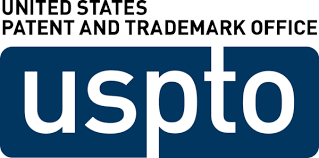 Exellent news, our joint patent application with Drexel University on highly porous MAX phase precursor for MXene synthesis published. Congratulations and thanks to all team involved!
Exellent news, our joint patent application with Drexel University on highly porous MAX phase precursor for MXene synthesis published. Congratulations and thanks to all team involved! Last Call! Have you submitted your abstract for IEEE NAP-2025 yet? Join us at the International Symposium on "The MXene Frontier: Transformative Nanomaterials Shaping the Future" – the largest MXene-focused conference in Europe this year! Final Submission Deadline: May 15, 2025. Don’t miss this exclusive opportunity to showcase your research and engage with world leaders in the MXene field!
Last Call! Have you submitted your abstract for IEEE NAP-2025 yet? Join us at the International Symposium on "The MXene Frontier: Transformative Nanomaterials Shaping the Future" – the largest MXene-focused conference in Europe this year! Final Submission Deadline: May 15, 2025. Don’t miss this exclusive opportunity to showcase your research and engage with world leaders in the MXene field!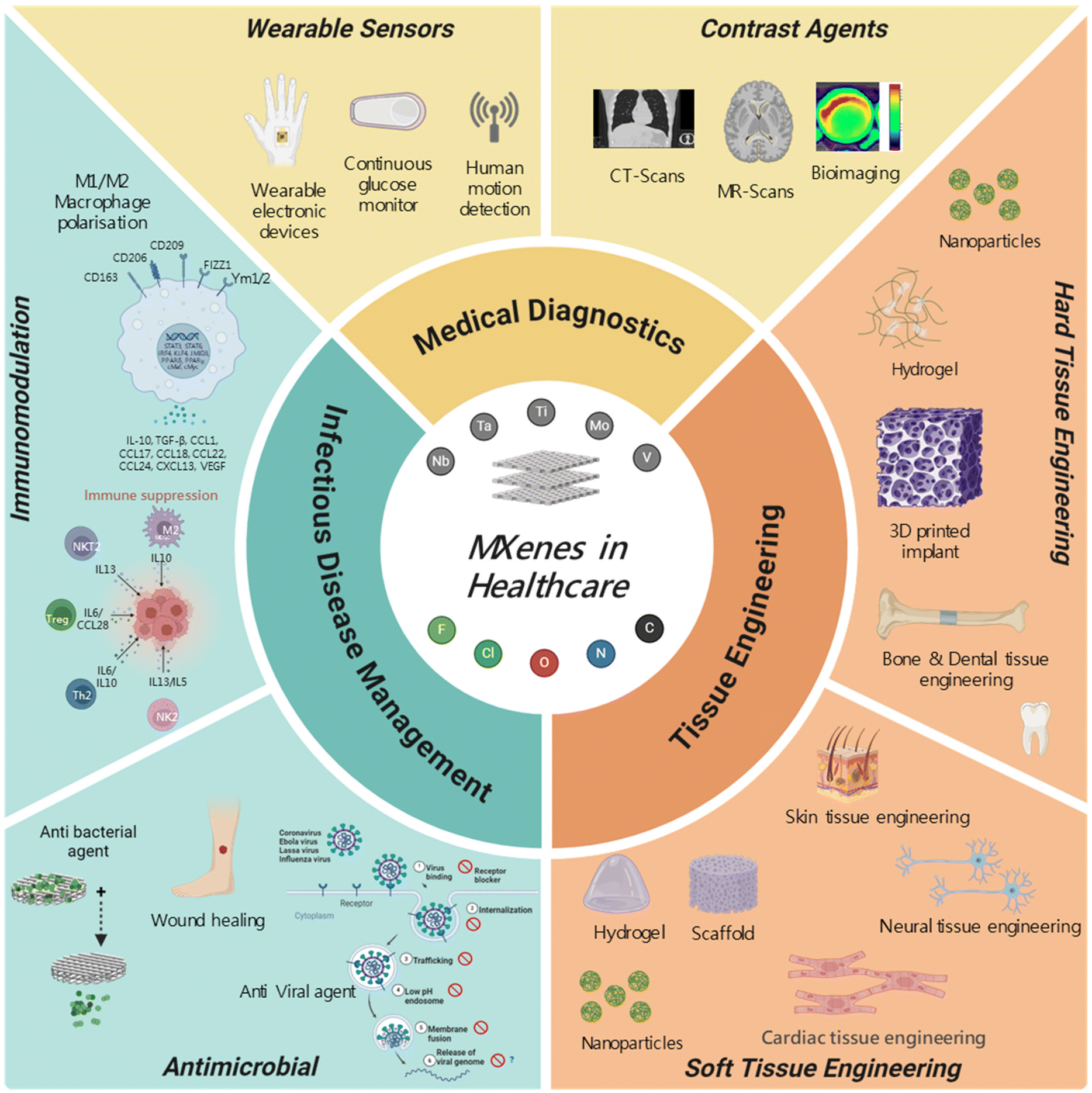 We are excited to announce the publication of latest review article on MXenes in Healthcare. This comprehensive review explores the groundbreaking role of MXenes—an emerging class of 2D materials—in revolutionizing the fields of medical diagnostics and therapeutics. Read the full article here: https://doi.org/10.1039/D4NR04853A.
We are excited to announce the publication of latest review article on MXenes in Healthcare. This comprehensive review explores the groundbreaking role of MXenes—an emerging class of 2D materials—in revolutionizing the fields of medical diagnostics and therapeutics. Read the full article here: https://doi.org/10.1039/D4NR04853A. Congratulations and thank you to our collaborators from TU Wien and CEST for very interesting work and making it published! In this work, an upscalable electrochemical MXene synthesis is presented. Yields of up to 60% electrochemical MXene (EC-MXene) with no byproducts from a single exfoliation cycle are achieved.
Congratulations and thank you to our collaborators from TU Wien and CEST for very interesting work and making it published! In this work, an upscalable electrochemical MXene synthesis is presented. Yields of up to 60% electrochemical MXene (EC-MXene) with no byproducts from a single exfoliation cycle are achieved. Congratulations to all collaborators with this interesting joint work!
Congratulations to all collaborators with this interesting joint work!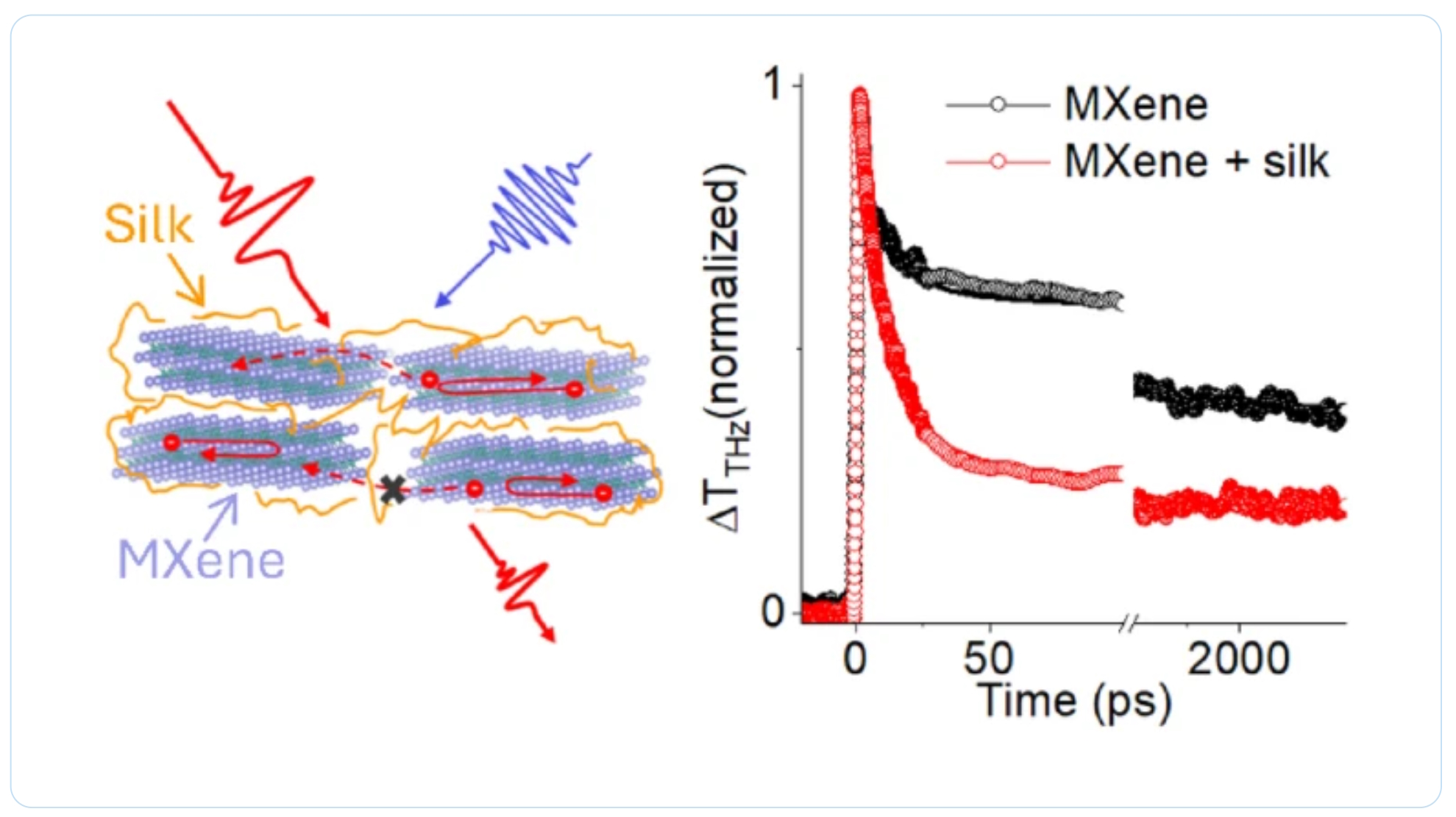 Thank you to our collaborators for the amazing joint work recently published in Graphene and 2D Nanomaterials about MXene–silk fibroin composite films aiming to develop materials with tunable electronic and thermal properties
Thank you to our collaborators for the amazing joint work recently published in Graphene and 2D Nanomaterials about MXene–silk fibroin composite films aiming to develop materials with tunable electronic and thermal properties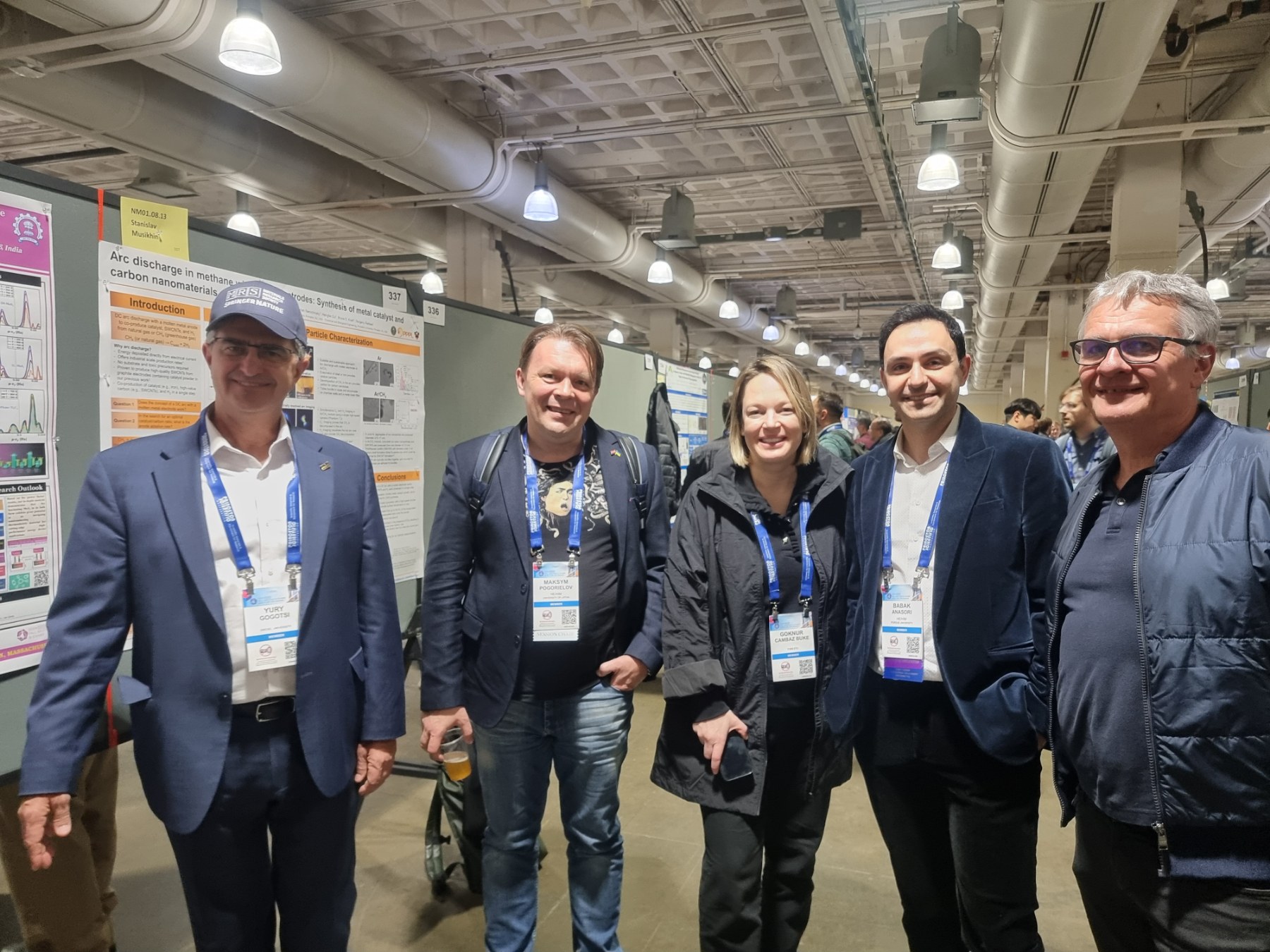 Dr. Oleksiy Gogotsi, director of MRC and Carbon-Ukraine, innovative companies that are among the leaders on the world MXene market, visited 2024 MRS Fall Meeting & Exhibit. together with Dr. Maksym Pogorielov, Head of Advanced Biomaterials and Biophysics Laboratory, University of Latvia.
Dr. Oleksiy Gogotsi, director of MRC and Carbon-Ukraine, innovative companies that are among the leaders on the world MXene market, visited 2024 MRS Fall Meeting & Exhibit. together with Dr. Maksym Pogorielov, Head of Advanced Biomaterials and Biophysics Laboratory, University of Latvia.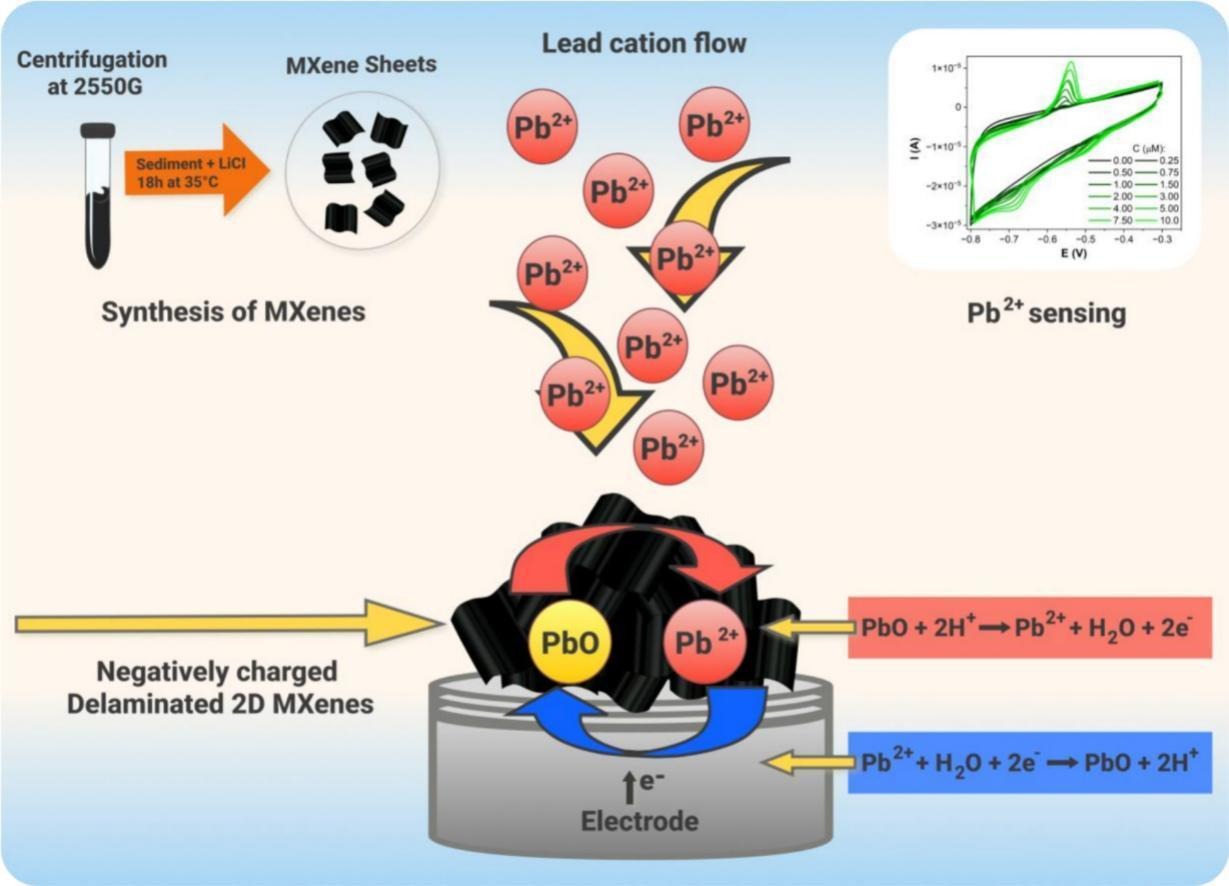
 MRC and Carbon-Ukraine team visited the 3rd International MXene conference held at Drexel University on August 5-8, 2024. Conference brought together the best reserchers and leading experts on MXene field.
MRC and Carbon-Ukraine team visited the 3rd International MXene conference held at Drexel University on August 5-8, 2024. Conference brought together the best reserchers and leading experts on MXene field. 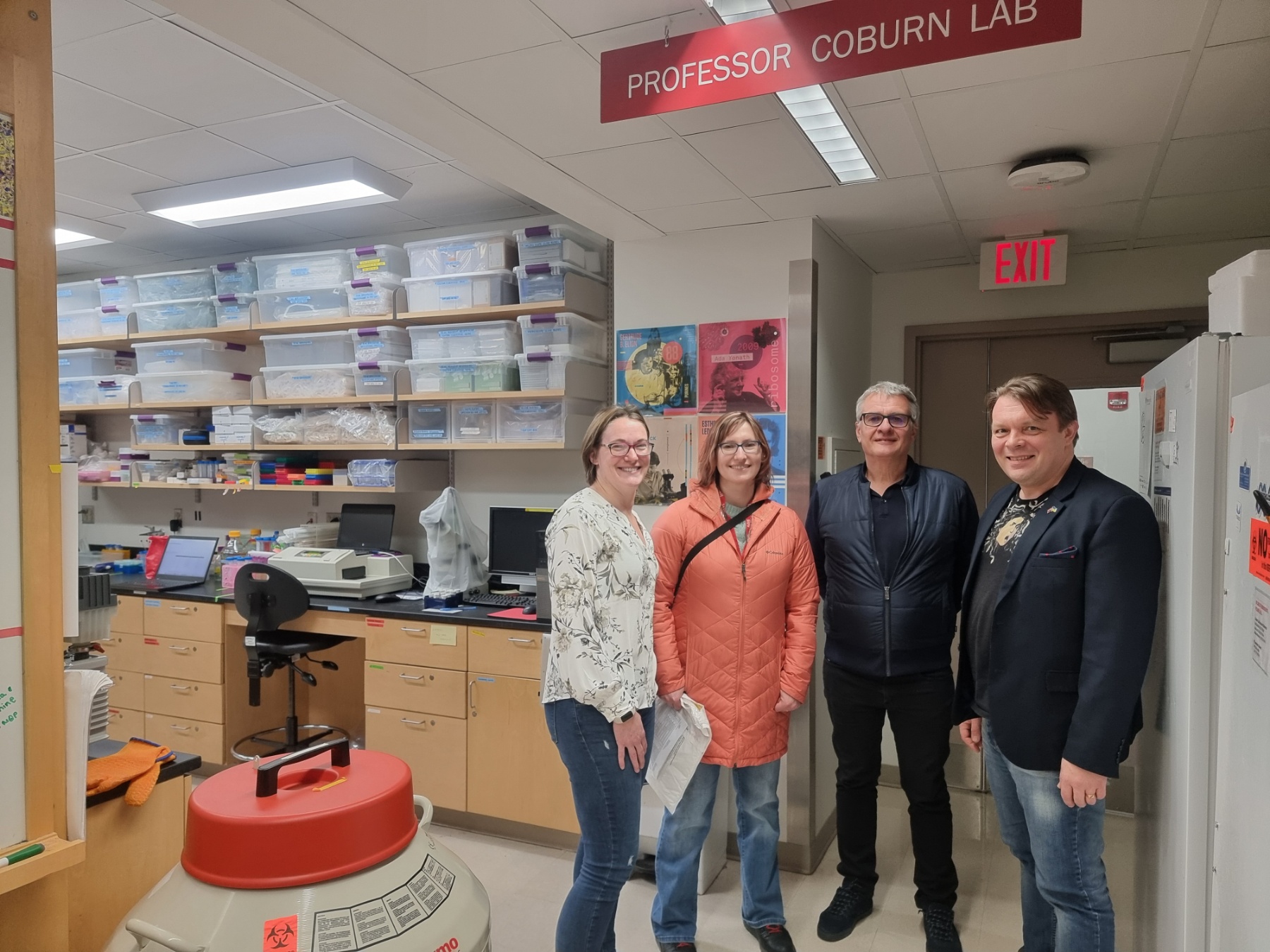
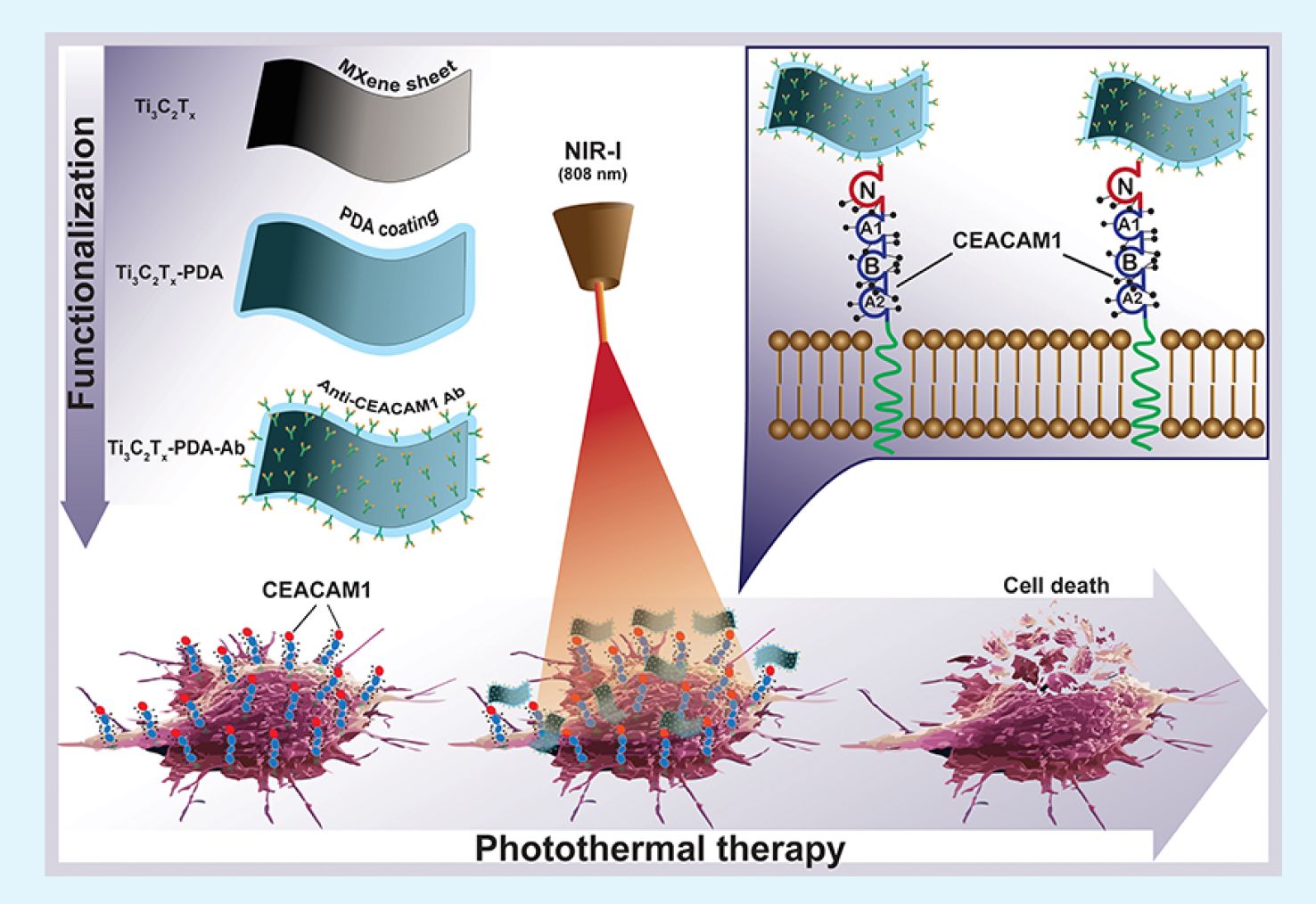 Together with colleagues from the University of Latvia, MRC/Carbone Ukraine, Adam Mickiewicz University, University Clinic Essen, and others, we have developed a novel concept involving the binding of antibodies to MXenes. In our research, we utilized anti-CEACAM1 antibodies to develop targeted photo-thermal therapy for melanoma (in vitro), paving the way for future in vivo studies and clinical trials. For the first time, we demonstrate the feasibility of delivering MXenes specifically targeted to melanoma cells, enabling the effective ablation of cancer cells under near-infrared (NIR) light. This new technique opens up vast potential for the application of MXenes in cancer treatment, diagnostics, drug delivery, and many other medical purposes.
Together with colleagues from the University of Latvia, MRC/Carbone Ukraine, Adam Mickiewicz University, University Clinic Essen, and others, we have developed a novel concept involving the binding of antibodies to MXenes. In our research, we utilized anti-CEACAM1 antibodies to develop targeted photo-thermal therapy for melanoma (in vitro), paving the way for future in vivo studies and clinical trials. For the first time, we demonstrate the feasibility of delivering MXenes specifically targeted to melanoma cells, enabling the effective ablation of cancer cells under near-infrared (NIR) light. This new technique opens up vast potential for the application of MXenes in cancer treatment, diagnostics, drug delivery, and many other medical purposes.